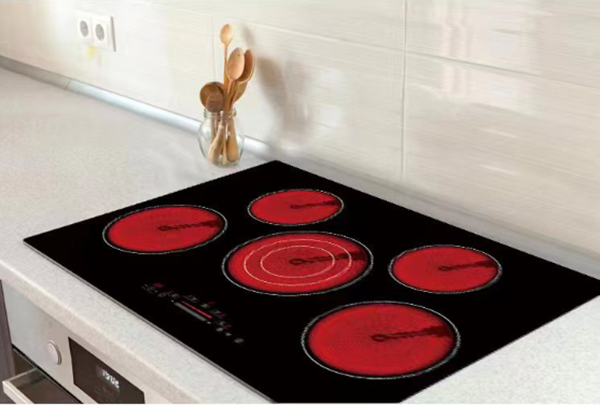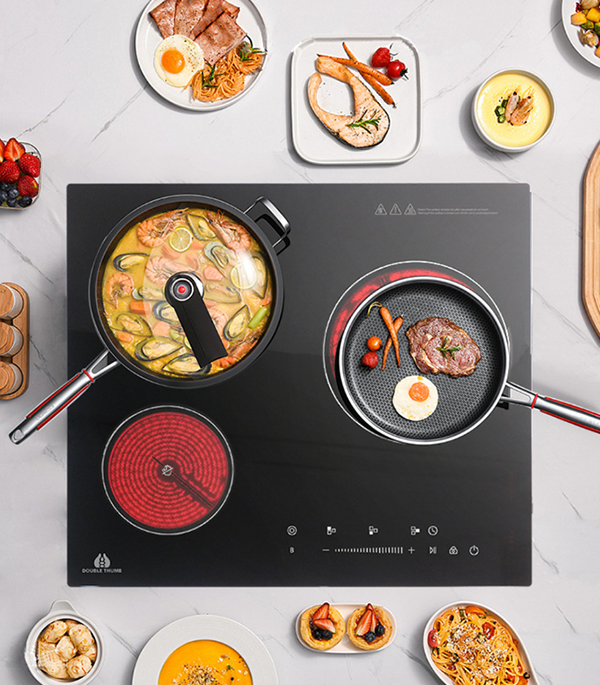
Ceramic hobs have become a popular choice for modern kitchens, offering sleek design, easy cleaning, and efficient cooking. As the demand for modern kitchen appliances continues to rise, the market for ceramic hobs is also experiencing growth and diversification. In this article, we will delve into the current state of the market for ceramic hobs, exploring the driving factors, trends, and future prospects.
Market Overview The market for ceramic hobs has witnessed steady growth in recent years, driven by factors such as changing consumer lifestyles, increasing disposable income, and the growing trend of open-plan kitchen designs. Ceramic cookes have gained popularity due to their contemporary appearance, ease of use, and energy efficiency. Additionally, advancements in technology have led to the development of high-performance ceramic hobs with precise temperature control and advanced safety features, further fueling demand.
Consumer Trends One of the key factors shaping the market for ceramic hobs is the evolving consumer preferences. Today's consumers are seeking kitchen appliances that not only offer functionality but also complement the overall aesthetic of their kitchen. Ceramic hobs, with their sleek and minimalist look, align with the contemporary design preferences of consumers. Furthermore, the increasing focus on energy efficiency and sustainability has boosted the appeal of ceramic hobs, as they are known for their quick heating and energy-saving properties.
Another notable trend is the integration of smart features in ceramic hobs, catering to tech-savvy consumers who seek connected appliances that offer enhanced convenience and control. Features such as touch controls, wireless connectivity, and compatibility with smart home systems have made ceramic hobs more attractive to a technologically inclined audience.
Market Dynamics The market for ceramic hobs is influenced by various factors, including economic conditions, regulatory standards, and technological advancements. Economic prosperity and urbanization have a direct impact on the market, as urban dwellers with higher disposable income are more likely to invest in premium kitchen appliances, including ceramic hobs. Additionally, government initiatives promoting energy-efficient appliances and sustainability play a role in shaping consumer preferences and market dynamics.
Technological advancements continue to drive innovation in ceramic hob manufacturing, leading to the introduction of new features, improved performance, and enhanced safety standards. Manufacturers are focusing on product differentiation through innovative designs, materials, and functions to gain a competitive edge in the market.
Challenges and Opportunities While the market for ceramic hobs presents numerous opportunities, it also faces challenges that need to be addressed. Pricing pressure, competition from alternative cooking technologies, and changing consumer preferences are some of the hurdles that manufacturers and retailers need to navigate. Furthermore, the impact of the COVID-19 pandemic on supply chains and consumer behavior has also necessitated adaptability and resilience within the industry.
However, amidst these challenges, there are ample opportunities for growth, particularly in emerging markets where demand for premium kitchen appliances is rising. Manufacturers can capitalize on the growing preference for induction ceramic hobs, which offer faster cooking and improved energy efficiency compared to traditional electric hobs. Additionally, addressing the demand for customization and personalization in kitchen appliances can open up new avenues for market expansion.
Ceramic hob uses ceramic glass as the heating surface and has the characteristics of rapid heating, easy cleaning and stylish appearance. Compared with traditional gas stoves,induction stoves are safer and more convenient to use. Moreover, electric ceramic stoves have no restrictions on the choice of pots. Almost all types of pots can be used, including pots made of stainless steel, cast iron, aluminum and other materials. This flexibility makes electric ceramic hobs the first choice for many kitchen enthusiasts.

Future Outlook Looking ahead, the market for ceramic hobs is poised for further growth and innovation. As technology continues to shape the kitchen appliance industry, we can expect to see advancements in ceramic cooktops design, improved energy efficiency, and integration with smart home ecosystems. Sustainable manufacturing practices and materials, as well as the emphasis on safety and user-friendly features, will remain key focus areas for industry players.
In conclusion, the market for ceramic hobs is thriving, driven by evolving consumer preferences, technological advancements, and the pursuit of sustainable and efficient cooking solutions. By understanding and adapting to these trends, manufacturers and retailers can position themselves for success in a dynamic and competitive market landscape.
Post time: Dec-13-2023



